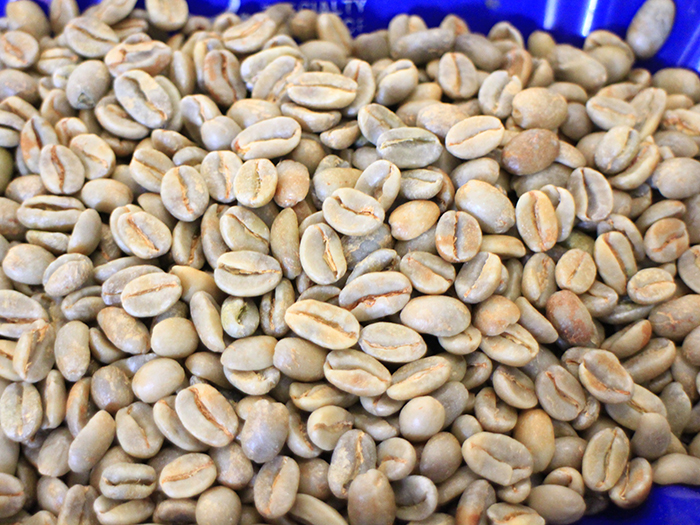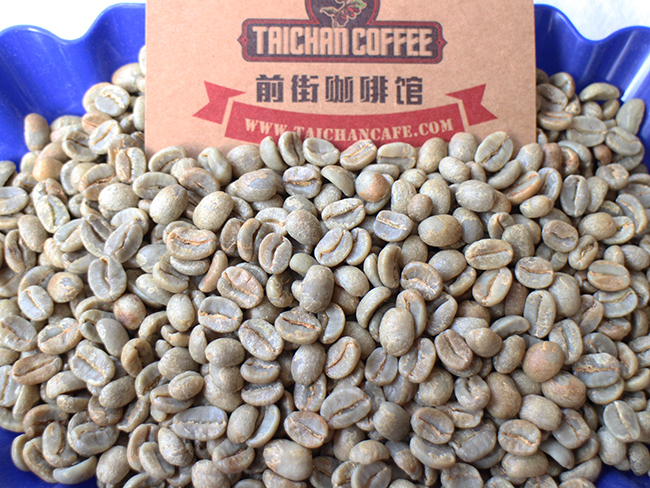How to choose coffee beans? Choosing the right coffee beans? Costa Rica Fire Phoenix Estate Raw Beans
What kind of raw beans are high-quality raw beans? First look at the surface of beans, fresh and high-quality raw beans, the surface is shiny, in addition, the processing of good raw beans, uniform color, the surface of uneven color can not be called good beans, must choose uniform color. Secondly, the particle size is the same, which is also evidence of good quality management. Make sure that the particle size is the same when you buy it. Even and neat coffee raw beans can achieve a consistent baking effect; otherwise, some are too deep and bitter, and some are too shallow and sour, which will affect the overall taste of roasted coffee beans. Raw beans are divided into several grades according to quality standards, which vary from place to place, basically according to size and shape. The higher the grade, the better the quality. At present, as the domestic coffee raw bean market has just started, the coffee raw beans sold are mainly low-grade futures beans. People usually have a lot of defects in the raw beans they get. Defective coffee beans are quite harmful, including that the mutated beans are neither flat nor garden beans. Due to abnormal development, the raw beans are broken in the center when they are shelled. This kind of bean is prone to uneven baking. Fermented beans / black beans are fermented internally in the process of processing or washing. It has the smell of fermented acid. Unripe beans / white dead beans are harvested when the coffee fruit is not fully ripe. This kind of bean is ivory after baking and tastes green and astringent. The process of processing and transportation of mildew beans is affected by damp, rain and mold. As long as one bean is moldy, it will soon spread to others, so be careful. Worm-eaten beans are eaten by a pest called coffee bark beetle, and there are insect eyes on the beans, which make coffee smell.
Country: Costa Rica
Grade: SHB
Producing area: central valley
Altitude: 1300-1500m
Annual rainfall: 3000 mm
Harvest month: December to February of the following year
Treatment method: red honey treatment
Variety: Kaddura, Kaduai
Producer: fire Phoenix Manor
Raw bean specification: 18 mesh
Flavor: dried fruit, vanilla, honey, thick and delicate taste
Located in the fertile hills of the Poas volcano in the central valley of Costa Rica, Fenghuang Manor is the first producer in Central and South America to produce honey treatment and sun-tanned coffee. It is a completely 100% organically grown coffee manor. The owner believes that organic farming is a better choice for environmental maintenance and family health, even though it faces many technical and organizational challenges. Still adhere to this belief. The high-quality coffee produced by this manor is very unique, and the biggest feature is its amazing sweetness! He became famous when he took part in the boutique coffee contest in 2009. During the harvest season, the sugar content of the fruit is measured by the sugar meter (Brixmeter) often equipped by the wine industry, and the best time and treatment are determined according to the brix sugar content. Only those with more than 20% sweetness will be exposed to the sun. The Brix value of general fruit is 14 for apple, 12 for lemon and 18 for passion fruit, but the coffee cherry of Fenghuang Manor can reach 21-22. The manor attaches great importance to the concept of environmental treatment, such as collecting Rain Water to process coffee, and the production and use of organic compost using earthworm farming (worm composting) makes the planting process completely free of chemical fertilizers and pesticides.
Honey treatment is a kind of treatment between sun treatment and water washing. It keeps the coffee clean by washing, and because it is dried in the sun together with the pulp mucosa, it greatly increases the sweetness and caramel flavor of the coffee (the sugar content of the pulp mucosa is extremely high). Honey treatment first appeared in Costa Rica in Central America, mainly because of the lack of water resources in some high-altitude areas of Central America, so the coffee fruit was dried in the sun together with the pulp mucosa after using the pulp sieving machine. Honey-treated coffee beans are graded according to the degree of retention of the pulp (from more to less): yellow honey (20%), red honey (50%) and black honey (100%). The drying time of raw coffee beans treated with red honey is 2-3 weeks, usually due to weather or placed in a dark place. If the weather is clear, the grower will shade part of the sun to reduce the sunlight time. The advantage of this is that it can avoid the excessive fermentation caused by direct exposure, so that the overall dried fruit flavor of coffee is obvious but not too strong, the fruit flavor is delicate and the fat is thick and lasting, and the rhyme is long!

Important Notice :
前街咖啡 FrontStreet Coffee has moved to new addredd:
FrontStreet Coffee Address: 315,Donghua East Road,GuangZhou
Tel:020 38364473
- Prev

How to choose coffee and raw beans by hand? Choose the right raw coffee beans? Cupid, god of love, Baru volcano, Panama
What kind of raw beans are high-quality raw beans? First look at the surface of beans, fresh and high-quality raw beans, the surface is shiny, in addition, the processing of good raw beans, uniform color, the surface of uneven color can not be called good beans, must choose uniform color. Secondly, the particle size is the same, which is also evidence of good quality management. Make sure that the particle size is the same when you buy it.
- Next

How to choose coffee and raw beans by hand? Choose the right raw coffee beans? Ethiopia, Sixida, Moses, Damashaki.
What kind of raw beans are high-quality raw beans? First look at the surface of beans, fresh and high-quality raw beans, the surface is shiny, in addition, the processing of good raw beans, uniform color, the surface of uneven color can not be called good beans, must choose uniform color. Secondly, the particle size is the same, which is also evidence of good quality management. Make sure that the particle size is the same when you buy it.
Related
- Detailed explanation of Jadeite planting Land in Panamanian Jadeite Manor introduction to the grading system of Jadeite competitive bidding, Red bid, Green bid and Rose Summer
- Story of Coffee planting in Brenka region of Costa Rica Stonehenge Manor anaerobic heavy honey treatment of flavor mouth
- What's on the barrel of Blue Mountain Coffee beans?
- Can American coffee also pull flowers? How to use hot American style to pull out a good-looking pattern?
- Can you make a cold extract with coffee beans? What is the right proportion for cold-extracted coffee formula?
- Indonesian PWN Gold Mandrine Coffee Origin Features Flavor How to Chong? Mandolin coffee is American.
- A brief introduction to the flavor characteristics of Brazilian yellow bourbon coffee beans
- What is the effect of different water quality on the flavor of cold-extracted coffee? What kind of water is best for brewing coffee?
- Why do you think of Rose Summer whenever you mention Panamanian coffee?
- Introduction to the characteristics of authentic blue mountain coffee bean producing areas? What is the CIB Coffee Authority in Jamaica?

